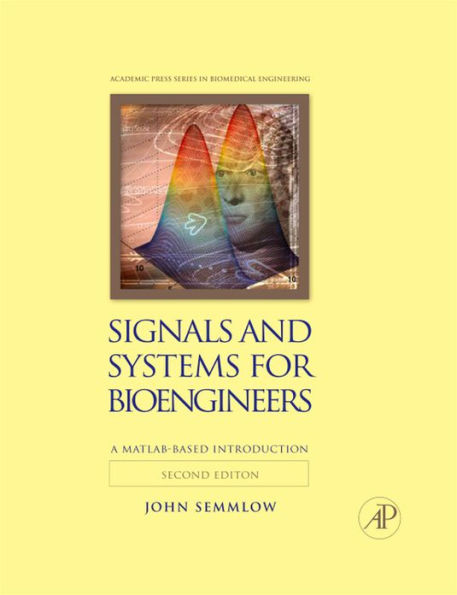Signals and Systems for Bioengineers: A MATLAB-Based Introduction
Signals and Systems for Bioengineers, Second Edition, is the only textbook that relates important electrical engineering concepts to biomedical engineering and biological studies. It explains in detail the basic engineering concepts that underlie biomedical systems, medical devices, biocontrol, and biosignal analysis. It is perfect for the one-semester bioengineering course usually offered in conjunction with a laboratory on signals and measurements which presents the fundamentals of systems and signal analysis. The target course occupies a pivotal position in the bioengineering curriculum and will play a critical role in the future development of bioengineering students. This book provides increased coverage of time-domain signal analysis as well as biomeasurement, using examples in ultrasound and electrophysiology. It also presents new applications in biocontrol, with examples from physiological systems modeling such as the respiratory system. It contains double the number of Matlab and non-Matlab exercises to provide ample practice solving problems - by hand and with computational tools. More biomedical figures are found throughout the book. For instructors using this text in their course, an accompanying website (www.elsevierdirect.com, in Semmlow page) includes support materials such as MATLAB data and functions needed to solve the problems, a few helpful routines, and all of the MATLAB examples. Intended readers include biomedical engineering students, practicing medical technicians, mechanical engineers, and electrical engineers. - Reorganized to emphasize signal and system analysis - Increased coverage of time-domain signal analysis - Expanded coverage of biomeasurement, using examples in ultrasound and electrophysiology - New applications in biocontrol, with examples from physiological systems modeling such as the respiratory system - Double the number of Matlab and non-Matlab exercises to provide ample practice solving problems - by hand and with computational tools - More Biomedical and real-world examples - More biomedical figures throughout
1110951234
Signals and Systems for Bioengineers: A MATLAB-Based Introduction
Signals and Systems for Bioengineers, Second Edition, is the only textbook that relates important electrical engineering concepts to biomedical engineering and biological studies. It explains in detail the basic engineering concepts that underlie biomedical systems, medical devices, biocontrol, and biosignal analysis. It is perfect for the one-semester bioengineering course usually offered in conjunction with a laboratory on signals and measurements which presents the fundamentals of systems and signal analysis. The target course occupies a pivotal position in the bioengineering curriculum and will play a critical role in the future development of bioengineering students. This book provides increased coverage of time-domain signal analysis as well as biomeasurement, using examples in ultrasound and electrophysiology. It also presents new applications in biocontrol, with examples from physiological systems modeling such as the respiratory system. It contains double the number of Matlab and non-Matlab exercises to provide ample practice solving problems - by hand and with computational tools. More biomedical figures are found throughout the book. For instructors using this text in their course, an accompanying website (www.elsevierdirect.com, in Semmlow page) includes support materials such as MATLAB data and functions needed to solve the problems, a few helpful routines, and all of the MATLAB examples. Intended readers include biomedical engineering students, practicing medical technicians, mechanical engineers, and electrical engineers. - Reorganized to emphasize signal and system analysis - Increased coverage of time-domain signal analysis - Expanded coverage of biomeasurement, using examples in ultrasound and electrophysiology - New applications in biocontrol, with examples from physiological systems modeling such as the respiratory system - Double the number of Matlab and non-Matlab exercises to provide ample practice solving problems - by hand and with computational tools - More Biomedical and real-world examples - More biomedical figures throughout
117.95
In Stock
5
1

Signals and Systems for Bioengineers: A MATLAB-Based Introduction
604
Signals and Systems for Bioengineers: A MATLAB-Based Introduction
604
117.95
In Stock

Product Details
| ISBN-13: | 9780123849830 |
|---|---|
| Publisher: | Elsevier Science & Technology Books |
| Publication date: | 08/29/2011 |
| Series: | Biomedical Engineering |
| Sold by: | Barnes & Noble |
| Format: | eBook |
| Pages: | 604 |
| File size: | 14 MB |
| Note: | This product may take a few minutes to download. |
About the Author
What People are Saying About This
From the B&N Reads Blog
